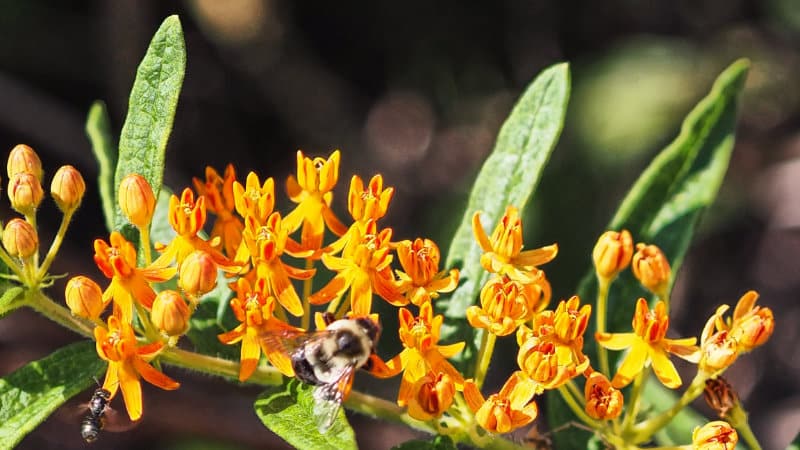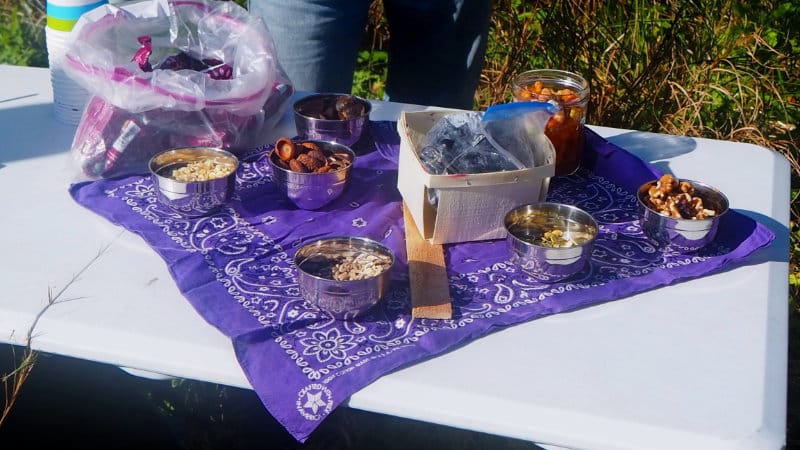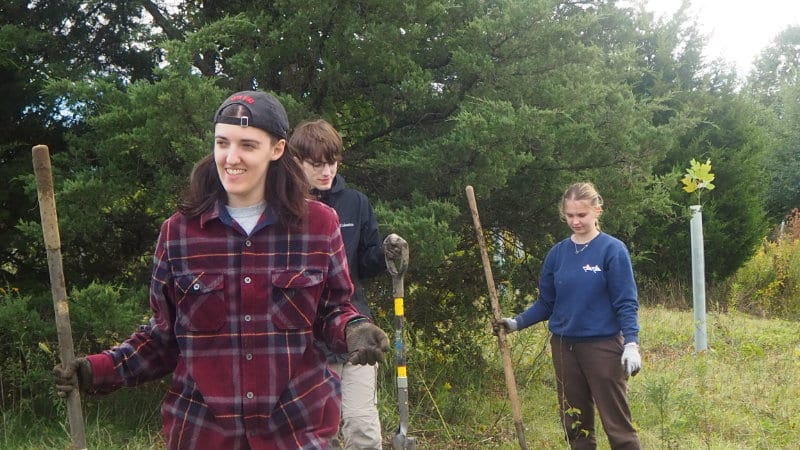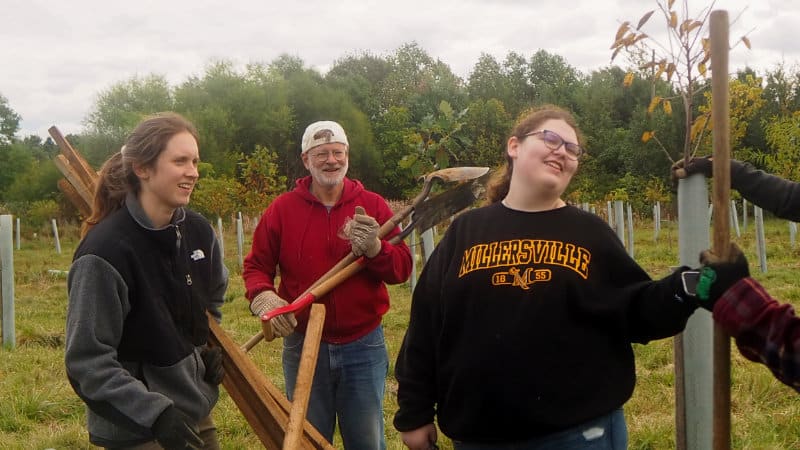The Stroud Center’s Impact: Connecting People to Land Uses That Protect Fresh Water

By Brian Preston
This fall, I had the opportunity to volunteer with Stroud Water Research Center at the Overlook Community Campus in Lancaster County, Pennsylvania, where a streamside forest and pollinator garden is taking root. What I found was an educational experience taking place just a few feet away from a popular local park trail.
Walkers and joggers passing by. People playing Frisbee golf in the nearby field. And a few feet from the pathway, a youth group from a local church was volunteering to perform maintenance on the forest and garden — at the same time, they were learning how the trees and wildflowers benefit the adjacent stream, a tributary to Little Conestoga Creek.
It was Indigenous Peoples’ Day, and the Stroud Center’s Lamonte Garber gave a presentation on Indigenous foods. Standing next to the stream, among the growing fruit and nut trees and the native plants that allow bees and butterflies to pollinate them, Lamonte spoke of local foods that Indigenous people grew and harvested. Engaged and enthusiastic, the group passed around the samples that Lamonte handed them. He told them about the planting practices Indigenous people used, the importance of streams for giving them access to clean water, and how they retained natural shelter. It was an immersive experience that offered insight into how people once worked and lived in the area.


We then turned our focus to planting trees. The Stroud Center’s Heather Titanich instructed us on how to plant young saplings, and we then got to work planting about 30 of them. As we did, Lamonte told us about the planted acorns that had sprouted since last winter. He thinned them to the strongest sapling, covered them with protective tubing, and staked them.
I walked 100 feet in one direction and saw young adults discussing the planting instructions they’d been given: how deep to plant the root ball, how to place the protective tubing over the sapling, how to stake it, and where to place the next one. I walked another several feet and found a group discussing foraging. One young woman was saying how she forages for chicken of the woods, an edible mushroom, while another young man asked her, “What is foraging, and where do you do that?”


The success of the streamside forest project at Overlook started when the first tree went in the ground and evolved over the next several years, educating and involving the community along the way. It excites me to think how it will continue to impact generations to come.
Brian Preston is a freelance photographer, a volunteer with Stroud Water Research Center, and an advocate for environmental research.



